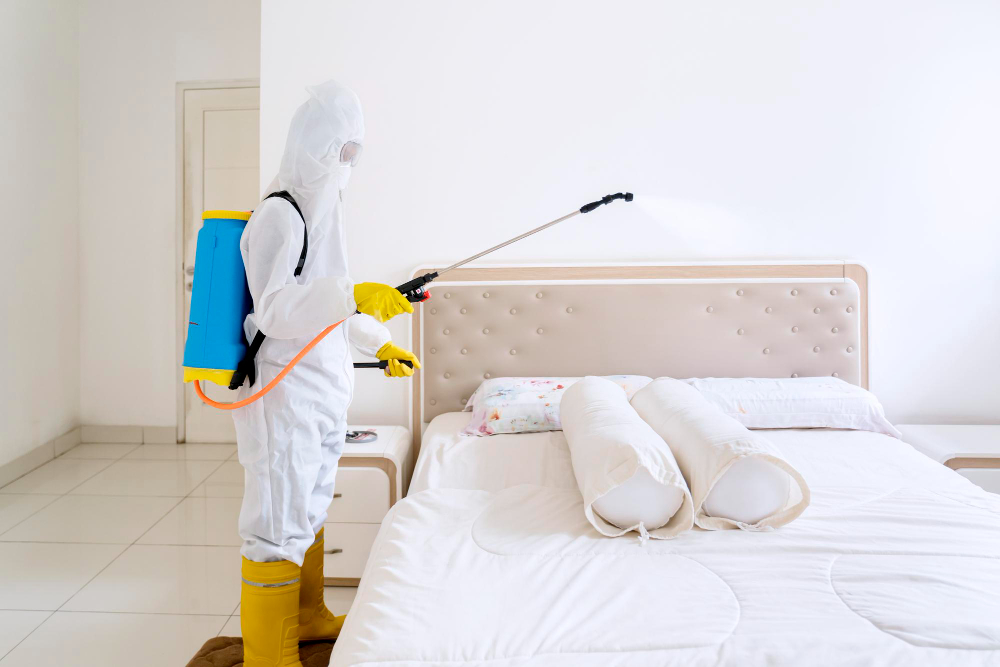
Bed bugs can be a serious issue for homeowners, causing discomfort and stress due to their bites and rapid spread. Once they invade your home, they can be challenging to eliminate. Here's a comprehensive guide on how to perform bed bugs control effectively and prevent future infestations.
What Are Bed Bugs?
Bed bugs are small, reddish-brown insects that feed on human blood. They are typically found in mattresses, bed frames, furniture, and cracks in walls or floors. Bed bugs are most active at night, biting exposed skin and leaving itchy, red welts. Detecting and eliminating them quickly is crucial to avoid a larger infestation.
Signs of a Bed Bug Infestation
Common symptoms of a bed bug infestation include:
- Red, itchy bites: Bed bugs leave small red marks on the skin after feeding.
- Bloodstains on bedding: Tiny blood spots on your sheets may be a sign of bed bugs.
- Faecal spots: Small black or brown stains left by bed bugs on mattresses or furniture.
- Shed skins: Bed bugs shed their skin as they grow, leaving evidence around their hiding spots.
- Strong odour: A musty smell may develop in severe infestations.
If you notice these signs, it's time to act.
How to Kill Bed Bugs?
1. Identify the Source
Bed bugs hide in various places, including mattresses, bed frames, furniture, cracks in walls, and clothing. Search all these areas to locate the infestation.
2. Declutter the Area
Remove clutter from the infested area to limit bed bugs' hiding spots. Clothes, books, and electronics should be checked and sealed in bags to prevent spreading bed bugs.
3. Clean and Heat Items
Bed bugs are sensitive to heat. Wash your clothes, bedding, and other items in hot water to kill both the bugs and their eggs. Dry them on high heat for at least 30 minutes. Heat treatments are one of the most effective ways to eliminate bed bugs.
4. Vacuum the Area
Use a vacuum cleaner to remove bed bugs and their eggs from mattresses, carpets, and furniture. Pay attention to seams, cracks, and corners. Once done, immediately seal the vacuum bag in a plastic bag to prevent bed bugs from escaping.
5. Steam Clean the Affected Areas
Steam cleaning is another heat-based treatment. Bed bugs die at temperatures above 120°F, so use a steam cleaner on mattresses, furniture, and cracks where they might hide.
6. Use Bed Bug Sprays and Powders
Look for sprays containing chemicals like pyrethrins or pyrethroids to kill bed bugs on contact. Be sure to follow the instructions carefully. For long-term protection, use bed bug powders like diatomaceous earth, which dehydrates and kills bed bugs. Apply it along baseboards, bed frames, and cracks.
7. Seal Cracks and Crevices
Seal gaps in walls, furniture, and baseboards to prevent bed bugs from moving around or entering your home. Caulking is an effective solution for sealing these entry points.
8. Mattress and Pillow Encasement Covers
Encasing mattresses and pillows traps bed bugs inside, preventing them from feeding and eventually starving them. Keep the encasements on for at least a year to ensure all bugs are eradicated.
9. Engage a Professional Exterminator
For severe infestations, hiring a professional exterminator is recommended. Pest control experts have specialized equipment and stronger insecticides to perform professional bed bugs control.
10. Monitor for Future Infestations
After treatment, continue monitoring for bed bugs. Use bed bug traps or interceptors around your bed legs and inspect regularly for any new signs of infestation.
How to Prevent Bed Bugs?
Once you've eliminated bed bugs, follow these steps to prevent them from returning:
1. Inspect Second-hand Items
Before bringing second-hand furniture or clothing into your home, thoroughly inspect it for signs of bed bugs.
2. Be Cautious When Traveling
When staying in hotels or motels, inspect the bed and furniture for bed bugs. Keep your luggage off the floor and bed and wash your clothes after traveling.
3. Use Bed Bug Interceptors
Place interceptors under your bed's legs to catch any bed bugs trying to climb up. Regularly check and clean the interceptors.
4. Declutter Your Home
Keep your home clean and clutter-free to reduce bed bug hiding spots. Regularly vacuum and clean to catch any early signs of infestation.
5. Seal Cracks and Gaps
Seal up cracks and crevices in walls, baseboards, and furniture to reduce the number of hiding places for bed bugs.
Why Choose Proserv Pest Control?
Dealing with bed bugs can be challenging, and professional help can make a significant difference. Proserv Pest Control offers tailored pest management services to eliminate bed bugs efficiently. Our experienced team uses advanced techniques to handle even the most stubborn infestations and provides ongoing support to ensure your home remains bed bug-free.
Conclusion
Bed bugs can be eliminated using a combination of heat, chemicals, and preventative measures. While DIY solutions can help with smaller infestations, professional pest control services, like those from Proserv Pest Control, ensure complete and lasting eradication. Trust the experts to restore your peace of mind and keep your home bed bug-free.

